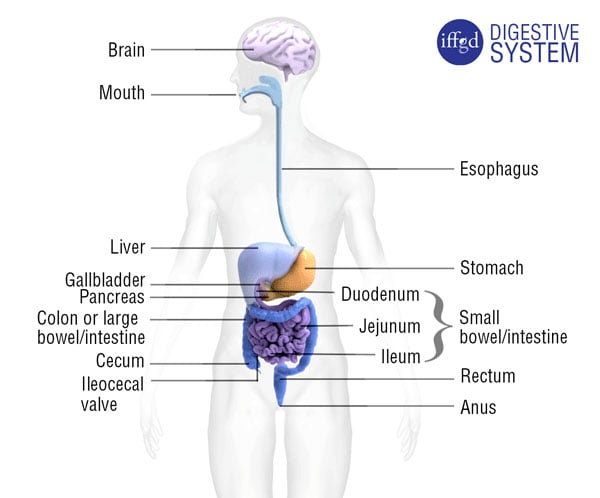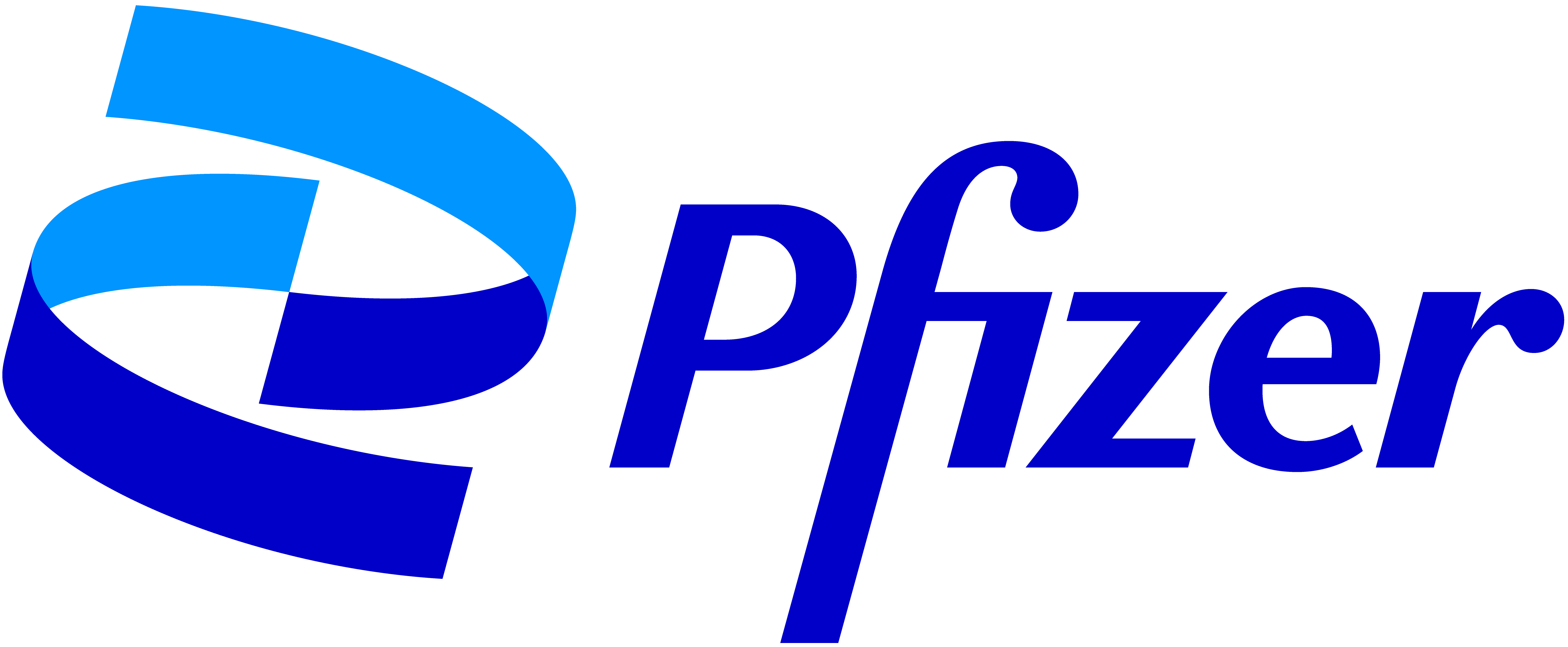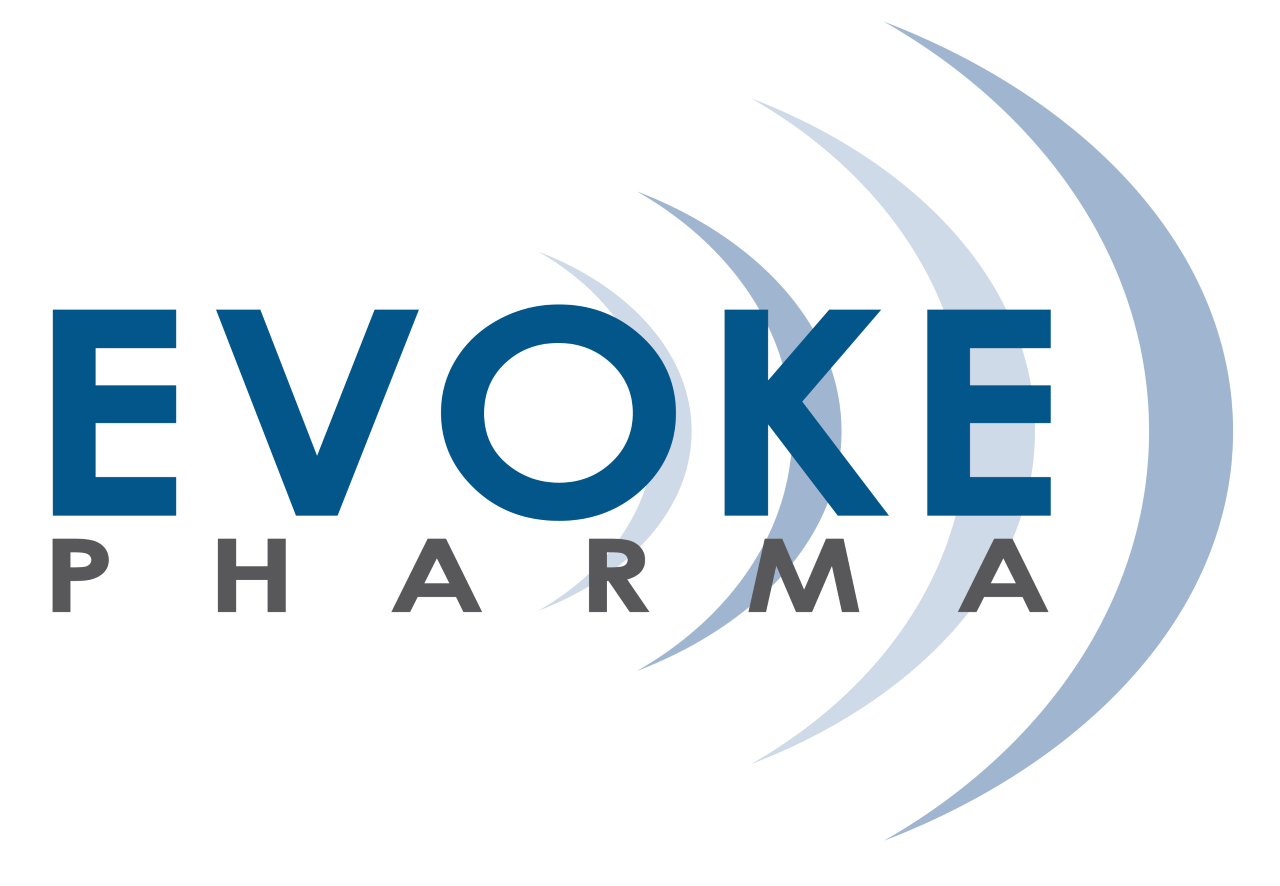The human body is amazing and also complicated. While one could argue that ‘everything’ has an impact on ‘everything’ else in the body (which it often does), for the purpose of understanding our health and disease we tend to organize the body into 12 major organ systems. These include the integumentary (skin), skeletal, muscular, lymphatic, respiratory, digestive, nervous, endocrine, immune, cardiovascular, urinary, and reproductive systems. Each of these systems can be seen as a collection of different body parts and organs that serve an overall vital function or purpose.
Digestive System Fun Facts
- The average person produces 2 pints of saliva every day. That’s about 2 ½ cans of soda.
- Your gut and brain are connected. Emotions (including stress) and brain disorders affect how your body digests food.
- Stain-removing laundry detergents have some of the same enzymes (special proteins that break things down) that are found in your digestive system.
- Your body has more microbial cells (bacteria, yeast, fungi, viruses) than your own human cells- most of these are in your digestive system (and keep you healthy)
Why is digestion important?
When we eat such things as bread, meat, and vegetables, they are not in a form that the body can use as nourishment. Our food and drink must be changed into smaller molecules of nutrients before they can be absorbed into the blood and carried to cells throughout the body. Digestion is the process by which food and drink are broken down into their smallest parts so that the body can use them to build and nourish cells and to provide energy.
How is food digested?
Digestion involves mixing food, its movement through the digestive tract, and the chemical breakdown of the large food molecules into smaller molecules. Digestion begins in the mouth, when we chew and swallow, and is completed in the small intestine. The chemical process varies somewhat for different kinds of food.

Copyright 2015 IFFGD
The Parts of Our Digestive System
The main parts of the digestive system make up what we call the digestive tract. It can be considered an open tube that carries things that go in the body to the point where they go out. This includes
- Mouth – The upper opening of the digestive tract. This is where food enters the body and is broken down by chewing. The mouth includes the lips, teeth, gums, and tongue.
- Esophagus – The muscular tube through which food passes from the mouth to the stomach.
- Stomach – A muscular organ between the esophagus to the small intestine. Food is broken down by in the stomach using enzymes and acid.
- Small intestine – The longest part of the digestive tract that is located between the stomach and the large intestine. Its function is to break down and absorb nutrients while mixing and moving the intestinal contents along the digestive tract into the large intestine.
- Large intestine – The large intestine, also known as the colon, connects the small intestine to the rectum and performs the vital task of absorbing water and vitamins while converting digested food into bowel movements.
- Rectum – The rectum is the final section of the large intestine where bowel movements are stored before being emptied through the anus.
- Anus – The anus is the lower opening of the GI tract where bowel movements exit the body.
In addition, there are a number of organs that work really closely to these parts of the digestive tract, such as the pancreas, gallbladder and liver. These organs make digestive juices to help break down and absorb the food
we eat.
The Small Intestine/Bowel
The mixture of food, liquid, and digestive juice (chyme) that passes out of the stomach, in a regulated controlled manner, enters the small intestine/bowel. The average total length of the normal small bowel in adults is about 7 meters/22 feet. The small intestine has 3 segments:
- the duodenum,
- the jejunum, and
- the ileum.
Each part or section performs an important role in nutrient absorption.
Duodenum – The chyme first enters into the duodenum where it is exposed to secretions that aid digestion. The secretions include bile salts, enzymes, and bicarbonate. The bile salts from the liver help digest fats and fat-soluble vitamins (Vitamin A, D, E, and K). Pancreatic enzymes help digest carbohydrates and fats. Bicarbonate from the pancreas neutralizes the acid from the stomach.
Jejunum – The chyme is then further transited down into the second or middle part of the small intestine, the jejunum. Mainly in the first half of the jejunum, the majority (about 90%) of nutrient absorption occurs involving proteins, carbohydrates, vitamins, and minerals.
Ileum – The ileum is the last section of the small intestine and leads to the large intestine or colon. The ileum mainly absorbs water, bile salts, and vitamin B12.
The ileocecal valve is a one-way valve located between the ileum and the cecum, which is the first portion of the colon. This valve helps control the passage of contents into the colon and increases the contact time of nutrients and electrolytes (essential minerals) with the small intestine. It also prevents back-flow (reflux) from the colon up into the ileum, and helps minimize the movement of bacteria from the large intestine up into the small bowel.
The Large Intestine/Bowel, or Colon
The primary function of the large intestine or colon is to absorb fluids and electrolytes, particularly sodium and potassium, and to convert remaining luminal contents into more solid stool.
The colon absorbs on average 1–1.5 liters (about 1–1.5 quarts) of fluid every day and has a capacity to adapt its fluid absorption to as much as 5 liters/quarts per day if needed.
Another function of the colon is to break down (ferment) dietary fiber to produce short chain fatty acids – substances that can be absorbed and provide added nutrition.
The first portion of the colon, the cecum, is shaped like a pouch, and is the area of storage for the contents arriving from the ileum. The second portion is the ascending colon, where fluids are absorbed and where some stool formation begins.
Production of Digestive Juices
The glands that act first are in the mouth – the salivary glands. Saliva produced by these glands contains an enzyme that begins to digest the starch from food into smaller molecules.
The next set of digestive glands is in the stomach lining. They produce stomach acid and an enzyme that digests protein. One of the unsolved puzzles of the digestive system is why the acid juice of the stomach does not dissolve the tissue of the stomach itself. In most people, the stomach mucosa is able to resist the juice, although food and other tissues of the body cannot.
After the stomach empties the food and juice mixture into the small intestine, the juices of two other digestive organs mix with the food to continue the process of digestion.
One of these organs is the pancreas. It produces a juice that contains a wide array of enzymes to break down the carbohydrate, fat, and protein in food. Other enzymes that are active in the process come from glands in the wall of the intestine or even a part of that wall.
The liver produces yet another digestive juice – bile. The bile is stored between meals in the gallbladder. At mealtime, it is squeezed out of the gallbladder into the bile ducts to reach the intestine and mix with the fat in our food.
The bile acids dissolve the fat into the watery contents of the intestine, much like detergents that dissolve grease from a frying pan. After the fat is dissolved, it is digested by enzymes from the pancreas and the lining of the intestine.
Absorption and Transport of Nutrients
Digested molecules of food, as well as water and minerals from the diet, are absorbed from the cavity of the upper small intestine. Most absorbed materials cross the mucosa into the blood and are carried off in the bloodstream to other parts of the body for storage or further chemical change. As already noted, this part of the process varies with different types of nutrients.
Carbohydrates
It is recommended that about 55 to 60 percent of total daily calories be from carbohydrates. Some of our most common foods contain mostly carbohydrates. Examples are bread, potatoes, legumes, rice, spaghetti, fruits, and vegetables. Many of these foods contain both starch and fiber.
The digestible carbohydrates are broken into simpler molecules by enzymes in the saliva, in juice produced by the pancreas, and in the lining of the small intestine.
Starch is digested in two steps: First, an enzyme in the saliva and pancreatic juice breaks the starch into molecules called maltose; then an enzyme in the lining of the small intestine (maltase) splits the maltose into glucose molecules that can be absorbed into the blood.
Glucose is carried through the bloodstream to the liver, where it is stored or used to provide energy for the work of the body.
Table sugar is another carbohydrate that must be digested to be useful. An enzyme in the lining of the small intestine digests table sugar into glucose and fructose, each of which can be absorbed from the intestinal cavity into the blood. Milk contains yet another type of sugar, lactose, which is changed into absorbable molecules by an enzyme called lactase, also found in the intestinal lining.
Protein
Foods such as meat, eggs, and beans consist of giant molecules of protein that must be digested by enzymes before they can be used to build and repair body tissues. An enzyme in the juice of the stomach starts the digestion of swallowed protein.
Further digestion of the protein is completed in the small intestine. Here, several enzymes from the pancreatic juice and the lining of the intestine carry out the breakdown of huge protein molecules into small molecules called amino acids. These small molecules can be absorbed from the hollow of the small intestine into the blood and then be carried to all parts of the body to build the walls and other parts of cells.
Fats
Fat molecules are a rich source of energy for the body. The first step in digestion of a fat such as butter is to dissolve it into the watery content of the intestinal cavity.
The bile acids produced by the liver act as natural detergents to dissolve fat in water and allow the enzymes to break the large fat molecules into smaller molecules, some of which are fatty acids and cholesterol. The bile acids combine with the fatty acids and cholesterol and help these molecules to move into the cells of the mucosa.
In these cells the small molecules are formed back into large molecules, most of which pass into vessels (called lymphatics) near the intestine. These small vessels carry the reformed fat to the veins of the chest, and the blood carries the fat to storage depots in different parts of the body.
Vitamins
Another vital part of our food that is absorbed from the small intestine is the class of chemicals we call vitamins. The two different types of vitamins are classified by the fluid in which they can be dissolved: water-soluble vitamins (all the B vitamins and vitamin C) and fat-soluble vitamins (vitamins A, D, E, and K).
Water and salt. Most of the material absorbed from the cavity of the small intestine is water in which salt is dissolved. The salt and water come from the food and liquid we swallow and the juices secreted by the many digestive glands.
How is the digestive process controlled?
Hormone Regulators
A fascinating feature of the digestive system is that it contains its own regulators. The major hormones that control the functions of the digestive system are produced and released by cells in the mucosa of the stomach and small intestine.
These hormones are released into the blood of the digestive tract, travel back to the heart and through the arteries, and return to the digestive system, where they stimulate digestive juices and cause organ movement.
The hormones that control digestion are gastrin, secretin, and cholecystokinin (CCK):
- Gastrin causes the stomach to produce an acid for dissolving and digesting some foods. It is also necessary for the normal growth of the lining of the stomach, small intestine, and colon.
- Secretin causes the pancreas to send out a digestive juice that is rich in bicarbonate. It stimulates the stomach to produce pepsin, an enzyme that digests protein, and it also stimulates the liver to produce bile.
- CCK causes the pancreas to grow and to produce the enzymes of pancreatic juice, and it causes the gallbladder to empty.
Additional hormones in the digestive system regulate appetite:
- Ghrelin is produced in the stomach and upper intestine in the absence of food in the digestive system and stimulates appetite.
- Peptide YY is produced in the GI tract in response to a meal in the system and inhibits appetite.
Both of these hormones work on the brain to help regulate the intake of food for energy.
Nerve Regulators
Two types of nerves help to control the action of the digestive system – extrinsic and intrinsic nerves.
Extrinsic (outside) nerves come to the digestive organs from the unconscious part of the brain or from the spinal cord. They release a chemical called acetylcholine and another called adrenaline. Acetylcholine causes the muscle of the digestive organs to squeeze with more force and increase the “push” of food and juice through the digestive tract. Acetylcholine also causes the stomach and pancreas to produce more digestive juice. Adrenaline relaxes the muscle of the stomach and intestine and decreases the flow of blood to these organs.
Even more important, though, are the intrinsic (inside) nerves, which make up a very dense network embedded in the walls of the esophagus, stomach, small intestine, and colon. The intrinsic nerves are triggered to act when the walls of the hollow organs are stretched by food. They release many different substances that speed up or delay the movement of food and the production of juices by the digestive organs.
How Can We Keep Our Digestive System Healthy?
- Eat a diverse diet full of fruits, vegetables, grains – your body needs a lot of different types of nutrients and vitamins and minerals. But you also want to have a diverse microbiome and therefore eating a lot of different types of fruit and vegetables (fiber) helps to maintain a healthy variety of organisms.
- Eat slow and chew your food well – By doing this you swallow less air and will have a better sense when you are full. Also, chewing well will really help your body get the most out of the food you take in.
- Enjoy smaller meals – your digestive system doesn’t work that well when it must tackle a lot of food. Also, a packed stomach can cause problems such as reflux— a situation where your food comes back up.
- Set a bedtime for your gut – your GI track needs rest just like you. Eating before bedtime isn’t the best for digestion and can often result in the food energy being stored as fat.
- Manage stress – stress can affect how well your body can digest food.
- Exercise – we aren’t sure exactly how, but there is evidence that exercise can reduce the risk of colon cancer, diverticular disease, and constipation. It can also help the pain related to irritable bowel syndrome. People who exercise have a more diverse microbiome which is important for health in general.
Source
Adapted from, IFFGD 287 “Digestive System 101” and NIDDK Publication “Your Digestive System & How it Works” #190














